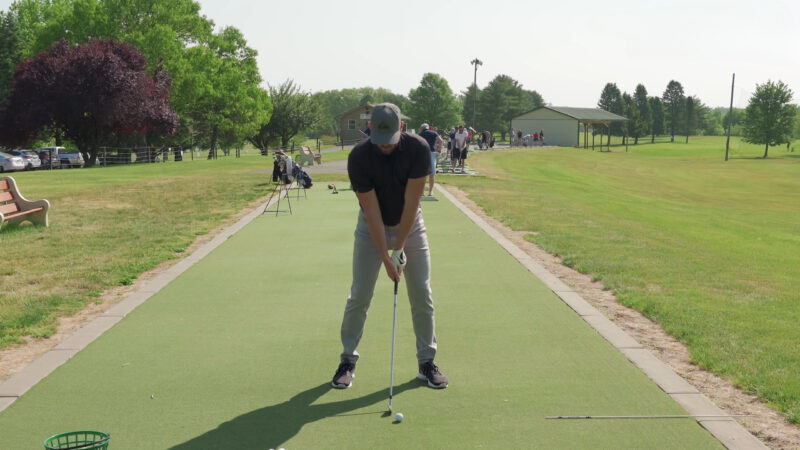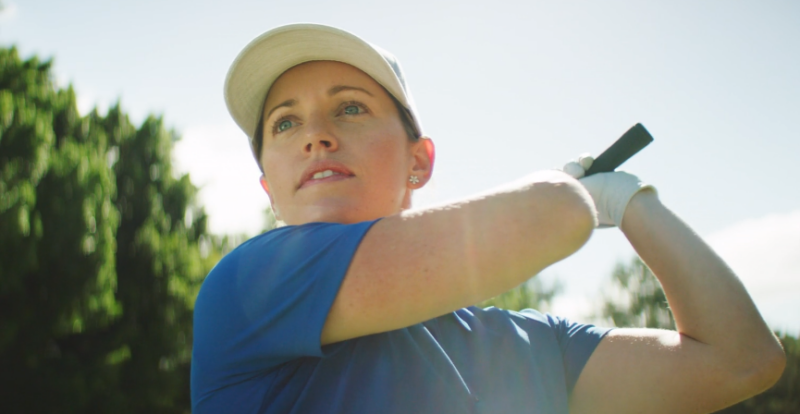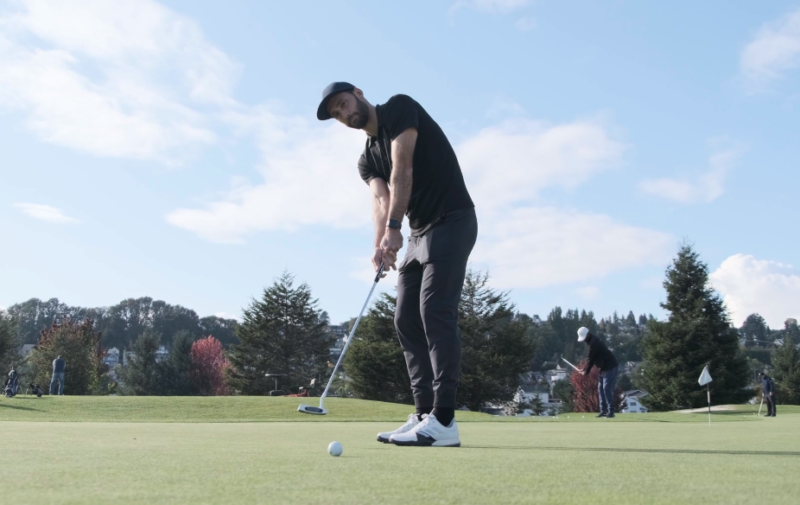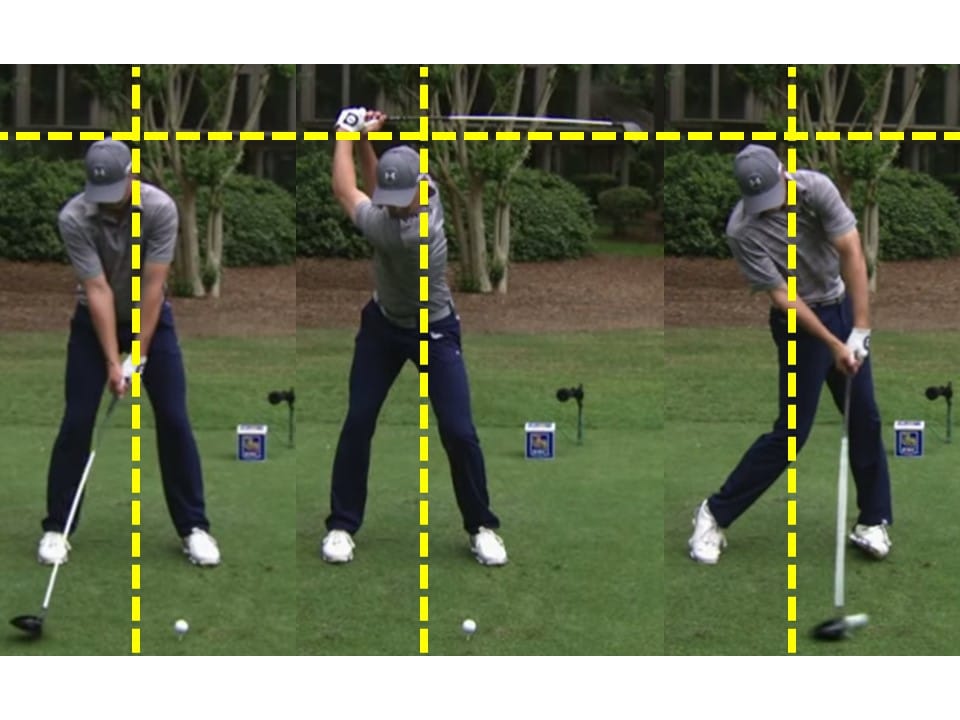In the quest for the perfect golf swing, one element often sparks debate among players and coaches alike: the position of the head. Traditional wisdom suggests keeping it still, but emerging perspectives propose that some movement could be advantageous.
Its position can affect everything from eye coordination to body alignment, impacting both the power and accuracy of the shot. Understanding the nuances of this aspect of golf technique is crucial for anyone looking to improve their game. Golfers strive for a consistent, powerful swing.
Head position impacts swing mechanics, so understanding best practices is key.
The Case for a Still Position

Keeping the head still during a golf swing is a cornerstone of traditional golf instruction. The rationale behind this approach is multifaceted:
| Benefit of Still Head Position | Description |
|---|---|
| Minimizes Excess Movement | A still head reduces unnecessary body movements, serving as a stable axis for efficient body rotation, crucial for balance and consistent swing path. |
| Focus on the Ball | Maintaining a stationary head position helps golfers keep unbroken visual contact with the ball, leading to better hand-eye coordination and more precise shots. |
| Stable Spine Angle and Body Rotation | A still head helps maintain a consistent spine angle during the swing, essential for effective energy transfer and full, controlled body rotation, key for generating power. |
While the benefits of a still head position are clear, it’s important to note that rigidity should be avoided.
Overly stiff neck muscles can lead to tension throughout the swing, which can reduce swing speed and fluidity. The goal is a controlled stillness that allows for power without sacrificing flexibility.
Potential Benefits of Some Movement

Contrary to traditional teachings, some golf instructors and players advocate for a degree of head movement during the swing. This perspective is based on the following benefits:
- Relaxed, Athletic Motion: Allowing for natural movement can lead to a more relaxed and athletic swing. Golf is, after all, a sport, and like in many other sports, rigid positions are often counterproductive. A slight movement of can help in syncing the upper and lower body movements, leading to a more fluid and natural swing.
- Enhanced Shoulder Turn and Coil: Some head movement, especially in the backswing, can facilitate a fuller shoulder turn. This increased rotation can lead to a better coil, storing more energy that can be unleashed during the downswing. For players struggling with a restricted backswing, allowing the head to move slightly can be a game-changer.
- Counterbalancing Hip Sway: For certain golfers, especially those with less flexibility, a small amount of movement can help counterbalance the sway of the hips. This movement can aid in achieving a better weight transfer and more powerful swing.
It’s important to understand that advocating for movement doesn’t mean endorsing a ‘free-for-all.’ The movement should be controlled and purposeful, not erratic or excessive. The key is finding a balance that allows for a natural, powerful swing without compromising control or consistency.
Finding the Right Approach for Your Swing

Determining the optimal head position is a highly individualized process. What works for one golfer might not work for another. Here are some strategies to find the right balance:
- Test Different Head Positions: Experimentation is key. Try swings with a still head and compare them with swings where you allow some head movement. Pay attention to the results in terms of both comfort and performance. Use video analysis or work with a coach to get an objective view of how these changes affect your swing.
- Drills to Feel Proper Motion and Resistance: There are numerous drills designed to help golfers understand and feel the right amount of movement. For instance, practicing swings with your forehead against a wall can teach you to minimize excessive movement. Conversely, drills that involve turning it slightly during the backswing can help you feel a fuller shoulder turn.
- Consult a Pro: A professional golf instructor can provide personalized advice based on your swing mechanics, body type, and skill level. They can help you understand the nuances of your swing and guide you towards the most effective position for your style. Modern technology can also help with this part significantly.
Remember, the goal is not to conform to a one-size-fits-all approach but to find a position that complements your unique swing mechanics.
Setting Up for Success
A proper setup is crucial for a successful golf swing, and this includes preparing the position. Here are some tips to ensure you’re set up for success:
- Strengthen Neck Muscles: Strong neck muscles are essential for maintaining a stable head position. Incorporate exercises that strengthen these muscles into your fitness routine. This doesn’t mean building a bodybuilder’s neck, but rather developing enough strength to hold your head steady through the swing.
- Check Alignment and Posture: Before swinging, ensure that your head is correctly aligned with your spine and that your posture is balanced. It should be in a natural position, neither too high nor too low, allowing for a clear view of the ball without straining your neck.
- Rehearse Desired Head Position: Practice your desired head position even before you swing. This can be done during your pre-shot routine. Rehearsing the position helps in ingraining it into your muscle memory, making it more likely to be replicated during an actual swing.
FAQs
Why did Jack Nicklaus turn his head?
Jack Nicklaus turned his head slightly to the right during his setup to help initiate his swing and to facilitate a fuller shoulder turn, enhancing his power and control.
Why does my head drop in the backswing?
Your head might drop in the backswing due to a natural tendency to shift your weight or from trying to create more power, which can lead to changes in your posture and spine angle.
Where should your head be at impact?
At impact, your head should ideally be in a stable position, aligned with your spine and slightly behind the ball, allowing for a clear view of the ball and maintaining a consistent body alignment.
Is Jack Nicklaus color blind?
Yes, Jack Nicklaus is color blind; he has a specific type of color vision deficiency known as deuteranomaly, which affects his perception of certain colors like reds and greens.
Closing Thoughts
The debate over head position in golf swings is not about right or wrong but about what works best for each individual golfer. Whether you choose to keep your head still or allow for some movement, the key is to practice and refine your approach.
An optimal head position, tailored to your swing, can significantly enhance your performance, leading to more consistent, powerful, and controlled shots. Remember, golf is a journey of continuous improvement, and fine-tuning even the smallest details, like head position, can make a big difference in your game.
If you want to take a look at some more interesting golf-related subjects, be sure to visit our site.
